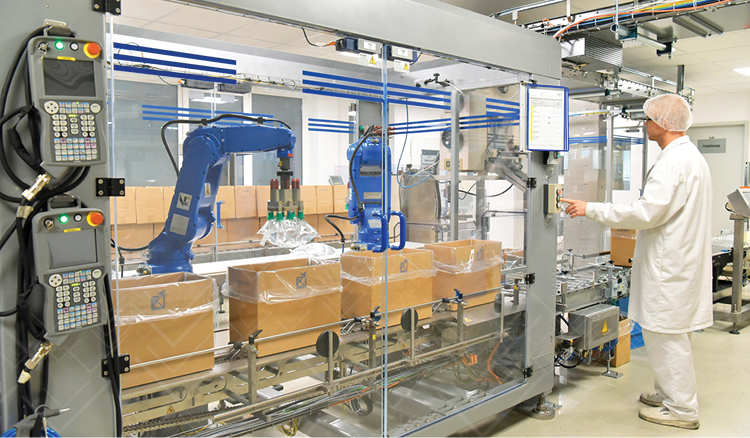Debunking The Top 10 Misconceptions About On-Demand Labor
Traditional labor models were built for a world that no longer exists. Demand today is volatile, dynamic, and nonlinear — yet most companies still operate as if it were stable, predictable, and smooth. They size headcount to averages instead of reality, and then absorb the penalty in overtime, burnout, backlogs, and margin erosion.
Veryable exists to end that pattern.
Veryable’s on-demand labor marketplace introduces a flexible, just-in-time capacity layer that lets companies flex labor to real demand daily — not theoretical averages or quarterly projections. This isn’t another staffing tactic. This is a totally new labor system.
And because it breaks from the only reference point most leaders have ever known (temp labor), it gets incorrectly evaluated through legacy staffing assumptions. That reaction is predictable and understandable, but those assumptions are now blocking companies from unlocking the operational and financial upside this model delivers.
This article will surface the top 10 misconceptions we hear most often — and deeply debunk them — to clearly show the difference between static staffing and Veryable’s on-demand labor model.
Misconception #1: On-demand labor is just temp labor with a new name
Why people believe this: For decades, temp staffing was the only way operations leaders could get extra labor fast. Agencies controlled who showed up, when they showed up, and what quality you got — all through recruiters, resumes, and phone screens. So when leaders hear “flexible labor,” their brain automatically maps it to the old temp staffing model because that’s the only frame they’ve ever had.
Why it’s wrong: Veryable is not a staffing agency. It is a marketplace. Operators choose where they want to work, and companies choose who they want to bring in based on proven performance and reliability — not recruiter opinion or assignment. This isn’t brokerage. It’s direct matching between the people doing the work and the companies that need the work done. That creates a completely different labor system, not a rebranded version of temp staffing.
How Veryable actually works: Instead of hoping an agency sends you the right people, you build your own returning Labor Pool by bringing back the Operators who perform well in your environment. Over time, those same Operators become a flexible extension of your core workforce — a bench of people you already trust, who already understand your workflows, and who you can bring in only when demand requires it. The more you use the marketplace, the stronger and more reliable that Labor Pool becomes.
Misconception #2: On-demand labor is too expensive
Why people believe this: Most leaders compare the Operator hourly payout to their internal hourly wage — and anchor to that number. They aren’t comparing it to the fully burdened cost of an employee: benefits, insurance, taxes, PTO accrual, healthcare contribution, recruiting overhead, retention and turnover cost, etc. Base wage is only one fraction of total labor cost — but it’s the piece most are used to staring at.
Why it’s wrong: When you include all fully burdened cost, the Operator payout + Veryable fee typically lands in the same cost band as a full-time employee. The savings comes from eliminating paying for labor on days you don’t need it — not from trying to drive down the rate itself. This is how companies like Scentsational Soaps & Candles reduced peak season labor costs as a % of revenue by 15% while simultaneously increasing productivity by 28%. The advantage is structural efficiency, not discount shopping.
How Veryable actually works: On-demand labor turns labor into a variable expense instead of a fixed one. You match labor to what needs to get done today — not what you hope or think the month might average out to. Overtime becomes a choice, not a rescue tool. And idle payroll disappears because you’re not paying for people on the floor without work — you only pay for labor when actual demand exists. This is where the real economic gain comes from.
Misconception #3: Our work is too complex and specialized for on-demand labor to be effective
Why people believe this: Many operations leaders assume their work is too sequencing-dependent, precision-dependent, or tribal knowledge heavy for on-demand operators to plug in. Historically, temp labor was generic labor — so the belief formed that anything similar is inherently unable to integrate into specialized environments. If the historical model couldn’t support complexity, the assumption becomes this new model can’t either.
Why it’s wrong: Complex environments actually experience the highest cost of labor misalignment because small volume shifts create disproportionate disruption. The more variation you manage, the more leverage you get from flexible capacity absorbing the fluctuating portion — while your core experts stay focused on the highest expertise tasks instead of the reactive ones. This is exactly what companies like Mack Tool in aerospace/medical machining have proven in practice — they built a returning bench of Operators over time, and that bench supports variability without risking tolerance-critical work.
How Veryable actually works: Companies begin by breaking the work into smaller modules and posting the tasks that are matchable first — not the most specialized work on day one. As Operators repeatedly perform well in those modules, those same individuals get brought back again, and eventually form a proven bench you can rely on. Over time, this creates a flexible extension of your specialized workforce that grows stronger and more capable with each repetition — allowing you to support variability without compromising the precision and control your complex environment requires.
Misconception #4: On-demand labor will upset FTEs by taking away jobs
Why people believe this: Most FTE resistance comes from lived history — layoffs, outsourcing waves, and temp labor that felt extractive vs supportive. When a new labor model shows up, people assume the logic is replacement instead of reinforcement. Leaders fear morale damage because employees assume “new labor source” means core jobs are at risk.
Why it’s wrong: Veryable protects core roles by absorbing the surge and variability that currently exhausts full-time teams. This reduces forced overtime, burnout, and reactive schedule swings. When on-demand labor handles the timing-volatile work, FTEs get stability back — which improves retention instead of threatening it. For example, companies like Gold Coast Eagle Distributing applied the model during peak season and saw higher morale because full-time employees were not constantly being pushed to their limit.
How Veryable actually works: Full-time employees continue to own the stable, recurring, and highest-skill core work. When demand spikes or surges temporarily above that baseline, companies pull in Operators from their labor pool to cover that overflow capacity. This protects FTEs from being forced into overtime, schedule chaos, or unrealistic throughput expectations. On-demand labor becomes the shock absorber — not the replacement layer. Over time, this strengthens morale because the variable work is handled by variable labor, and full-time roles remain protected, predictable, and valued.
Misconception #5: We’re not tech savvy enough to use this
Why people believe this: Most operations leaders assume this requires new system deployment, workforce tech integration, or a digital transformation effort. Historically, anything involving labor flexibility has required more administrative complexity — not less. So the assumption becomes: adopting on-demand labor is going to be a major lift.
Why it’s wrong: Veryable is not another enterprise software stack — it’s a tool companies can immediately use inside the operational rhythms they already run today. Supervisors already operate digitally every single day — scanners, ERP mobile access, messaging apps, digital boards — this simply becomes another operational lever in that same flow. Companies using Veryable have not needed new system buildouts, integrations, or platform transformations. They simply plug it into the pattern they already manage labor with.
How Veryable actually works: Supervisors post work, Operators see and choose where they want to work, and selection happens inside one single platform environment. There is no broker layer to coordinate with and no separate platform stack to learn — it becomes a simpler, more direct version of labor decision-making that already exists.
Misconception #6: I don’t have the right team to “manage this.”
Why people believe this: Companies assume this will require an additional role dedicated to labor orchestration because historically, working with temp agencies required constant communication & coordination, intake cycles, and administrative tracking.
Why it’s wrong: On-demand labor removes the administration burden — it doesn’t add to it. Veryable eliminates the broker gatekeeping and puts selection directly in the hands of the people already making labor decisions every day. Companies adopt this without adding labor coordinators or new administrative positions.
How Veryable actually works: Supervisors and managers continue making the same daily labor calls they already make today (who do we need tomorrow / where / for how long). The only difference is they now post that need directly into the marketplace instead of trying to stretch their fixed team or chase staffing agencies to fill gaps. They select Operators themselves, the same way they already assign work internally — which means this doesn’t create a new layer of work. It just makes the labor decision easier, faster, and more accurate using the people already running the floor.
Misconception #7: Our demand is super steady and we don’t have enough volatility to justify using it
Why people believe this: Companies often tend to evaluate demand volatility at a monthly or quarterly resolution. From that zoom level — demand often looks steady, predictable, and flat. So it feels unnecessary to change labor strategy because the variability at the “planning horizon” looks manageable.
Why it’s wrong: Volatility doesn’t live in the month — it lives inside the day. The cost impact of volatility is generated at the point of execution, not in the forecast review. Even companies with macro-steady demand still experience meaningful daily, hourly, SKU-level, or customer-sequencing swings. Those micro variations are what drive idle labor cost on slow days and expensive recovery mechanisms on high days (like overtime or batch pushing). Companies benefiting most from Veryable are not only the ones with huge seasonal swings — they are the ones eliminating small hidden leakage every day.
How Veryable actually works: Instead of sizing labor to the average behavior of the business, companies use Veryable to size labor to what is needed today. Even small day-to-day variation matters — because that is where cost leakage and throughput drag actually occur. You don’t need extreme seasonality or massive swings to benefit from on-demand labor. Once labor can flex to daily demand, the variability that used to hide inside averages becomes something you can actually respond to — instead of absorb.
Misconception #8: On-demand labor won’t work here because we can’t have a rotating door of new people and we don’t have systems to train them
Why people believe this: They assume using a marketplace means new people constantly show up — meaning training will be repeated endlessly and knowledge won’t compound. Traditional staffing models trained leaders to expect churn because there was no mechanism to consistently bring back the same people — so a belief formed that any other access to labor equals constant turnover.
Why it’s wrong: On-demand labor is not about bringing in endless new faces — it is about selecting the same high performers repeatedly so training becomes leverage instead of a sunk cost. And because Veryable Operators are constantly working in different environments across the region, they typically require less ramp time than a traditional applicant. Companies get access to a broader labor population, but they choose who returns — which allows them to build their own trained labor pool without carrying that cost permanently on payroll.
How Veryable actually works: Companies start Operators in the simplest, lowest risk, non–value add or support tasks first — the same way you would start a seasonal hire or a new full-time employee. As those Operators prove they can execute reliably, you selectively upskill the ones who perform well into more value-add areas where repeatability matters. And because those Operators remain available in the marketplace even when you don’t need them every day, you can continue bringing the same individuals back and continue developing them as needed. Over time, the best Operators form a flexible extension of your core workforce (your labor pool) — without requiring you to carry that labor on payroll year-round.
Misconception #9: We’re a very lean operation with good systems in place to manage volatility
Why people believe this: Lean culture trains companies to pursue stability through flow leveling, takt alignment, cross training, and waste elimination. So when leaders see themselves as “lean,” they often believe they’ve already solved volatility internally. The assumption becomes: if we run lean correctly, we shouldn’t need additional variable labor.
Why it’s wrong: Static headcount is not inherently lean if it forces overtime, burnout, firefighting, batching, or constant schedule reshuffling. Those compensating behaviors are waste. Lean without flexible labor still relies on heroics to absorb variation. Variable labor capacity actually enhances lean because it lets companies right-size capacity without having to overstaff or rely on reactive recovery.
How Veryable actually works: Veryable gives lean systems a way to flex to demand without breaking flow or creating waste downstream. Instead of building protective buffers or padding labor above takt “just in case,” companies use the marketplace to align labor with real-time demand — protecting takt without inflating headcount. Lean + variable labor is more compatible than lean + static labor.
Misconception #10: There’s no way you’re going to find people we can’t
Why people believe this: Companies often assume their existing recruiting channels represent the full available labor supply. So if internal job postings, staffing agencies, and the typical hiring funnel haven’t produced enough talent — they conclude the talent simply doesn’t exist. Historically, they’ve only been able to reach workers pursuing traditional employment, so their frame of reference is limited by the channel itself.
Why it’s wrong: Veryable doesn’t attract the full-time job seeker population. It unlocks an entirely different labor population that has historically been invisible to companies: semi-retired skilled labor, people who want part-time income, workers who prefer variable schedules, and highly skilled operators who simply don’t want full-time commitments. Companies who struggled for months to fill roles often begin receiving 5+ bids the moment they post work on Veryable, because this population finally sees and can opt into the work.
How Veryable actually works: Operators choose the work they want to take based on the type of work they’re good at, the schedule they want, and the pay that aligns with their preference — which draws in talent that would never surface through a traditional resume-driven hiring process. As companies repeatedly bring back the Operators who perform well, they naturally build a trusted bench of proven people they can rely on when extra capacity is needed. Veryable isn’t just reshuffling the same candidate pool that every HR channel competes for — it expands the labor pool entirely and makes more of the real labor market visible and accessible.
Conclusion
The most dangerous form of operational inefficiency is the kind that becomes invisible because it was normalized. Labor misalignment didn’t stay hidden because the impact was small, it stayed hidden because companies never had a mechanism to respond to it.
Veryable introduces a new labor system, one where capacity flexes with reality instead of headcount being anchored to averages or hope. Static labor is built on prediction. On-demand labor is built on response speed.
In a world where demand cycles, SKU variation, customer behavior, and operational complexity shift constantly — the long-term competitive advantage will not come from who forecasts the best. It will come from who adapts the fastest.
That requires labor flexibility.
That requires a just-in-time capacity layer.
That requires a marketplace, not a broker.
These misconceptions exist because companies are still evaluating a new model through old staffing frames. Once that frame is removed, the core truth becomes clear:
This is the future of how capacity is built.
This is how companies protect margins and service simultaneously.
This is how operational agility becomes a daily operating reality.
Get Started:
👉 Start building your labor pool today
👉 Want to speak to an expert? Contact us today.
Learn More:
👉 Info For Your Role Page: Learn how Veryable helps you reach your objectives, whether you're an executive, operations leader, frontline supervisor, continuous improvement professional, or HR leader.
👉 Case Studies Page: See how manufacturers and distributors have reduced costs, increased agility, and improved service by building a labor pool
👉 Value Estimation Calculator: See the positive bottom-line impact you can achieve by leveraging the Veryable solution.
Previous Posts
Cycle Time: The KPI That Defines Production Speed and Efficiency
The Future of Manufacturing and Logistics
Create a free business profile today to explore our platform.






